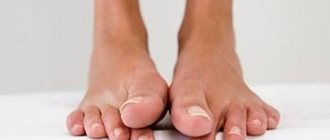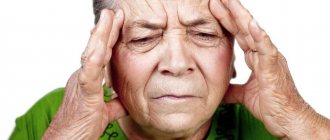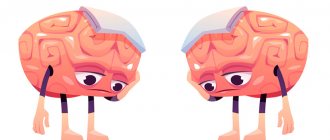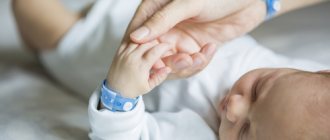What is a bruise
Bruise is the most common type of household injury, typical for children, athletes and people engaged in heavy physical labor. It represents damage to internal organs and tissues without significant disruption of their structure, and abrasions may occur. In case of bruises, the dermis and the vessels located under it are most vulnerable, which leads to the formation of hematomas and edema. A severe bruise poses a serious danger as internal organs may be injured.
To prevent the development of necrotic processes, it is important to be able to competently provide first aid for bruises of various origins.
Symptoms of bruises
With bruises, the following main symptoms are observed:
- The pain at the time of injury can be severe, but subsides fairly quickly. After 30 minutes it starts to build up and can be very intense the next day.
- Edema. After an injury, swelling of the damaged tissues increases for the first three days.
- Hemorrhage: change in skin color (blue-violet, greenish-yellow). The color of the bruise depends on the age of the injury: a fresh one has a purple-bluish color, after 3-4 days it becomes blue-yellow, and on the 5-6th day it turns yellow.
Signs of bruise
The main signs of a bruise are:
- pain in the damaged area;
- hemorrhage due to damage to capillary vessels;
- formation of hematoma and edema.
Depending on the location of the injury, cyanosis and swelling may appear immediately, as occurs in the case of damage to the subcutaneous tissue and upper layers of the skin. In the case of bruises of deeper tissues, a hematoma may appear after several hours or even days. The swelling accompanying the bruise reduces the mobility of the injured organ, creating discomfort when moving.
The victim experiences the most severe pain immediately after a soft tissue injury, and after a couple of hours it subsides. When pressed, the pain increases. Swelling may increase over several hours, sometimes days.
How to choose an effective cream for bruises and bruises?
As a local non-steroidal anti-inflammatory drug, you can choose a European-made drug - Aertal® cream. It has an anti-inflammatory and analgesic effect, suppresses the development of edema and erythema. This is the only drug based on aceclofenac in the form of a cream. It has established clinical efficacy and is well tolerated.
The active ingredient - aceclofenac - is found in the cream in the form of tiny particles. After application, it is absorbed, quickly reaching saturation. The active substance accumulates in the absorption zone. This helps to increase anti-inflammatory activity. Aceclofenac enters the systemic circulation in small quantities, so the risk of side effects of Aertal® cream, including on the gastrointestinal tract, is minimized.
To prevent the development of swelling, relieve pain and reduce bruising, apply the cream with rubbing movements to the site of the bruise 3 times a day.
Degrees of injury
Bruises vary in severity:
- the first is a mild injury that does not require treatment;
- the second is a bruise of muscle tissue, accompanied by severe pain, the formation of edema and bruises;
- third, tendons may be damaged as a result of a bruise;
- fourth - bruise of internal organs with severe swelling and pain.
A severe bruise may be accompanied by a closed fracture, so in this case it is especially important to immediately consult a doctor for a thorough diagnosis and treatment.
What types of fractures are there?
There are open and closed fractures. In an open fracture, the damaged bone injures the skin. The main danger of an open fracture is large blood loss, possible infection in the wound and further development of the inflammatory process.
Another type of fracture is a displaced fracture. In a displaced fracture, the position of the bones relative to each other is disrupted. A compression fracture is a strong compression of bones.
The use of folk remedies
Competent first aid for a bruise, provided in a timely manner, significantly alleviates the condition of the victim, speeds up the healing process, and reduces the risk of possible complications.
In case of a bruise, it is advisable to apply cold to the injured area, for example a bag of frozen vegetables from the freezer, wrapped in a clean cloth. Ice can be kept for up to 40 minutes, preventing hypothermia, then take a break for 20 minutes. Repeat several times over 4-5 hours. This event helps relieve swelling and prevents the inflammatory process from developing. If the victim has severe pain, you can give him a painkiller.
It is not recommended to resort to folk remedies such as raw potatoes, oil dressing and others. If the bruise is accompanied by abrasions and scratches, which is often found in children, then in this case there is a high probability of infection.
has developed special products that can be used as first aid for bruises.
First, you should treat your hands with the antiseptic “Sterillum”. After this, you need to clean the area around the abrasion or the bruise. For a small abrasion, you can apply a bandage with Branolind N Peruvian balm and leave it in place for up to three days without dressing.
For better fixation of the bandage, use the Peha-Haft self-fixing bandage. It is securely attached by simply pressing one layer to another, does not stick to hair or skin, is economical (1.5–2 turns are enough for reliable fastening), and is available in different colors.
For bruises and abrasions, you can use Cosmopor Antibacterial adhesive bandages. The soft pad absorbs discharge from the abrasion well, and the silver-containing layer reliably protects the bruise site from infection. Cosmos Kids patches with different designs are produced for children.
Special patches from the Omni series have been developed for people with sensitive skin. Their adhesive surface is made of rubber glue, and the patch itself is made of non-woven hypoallergenic material or rayon.
In case of a bruise with a sprain, use a Putterbint cotton compression bandage to improve blood circulation and relieve swelling.
First aid for bruises
To speed up the resorption of the hematoma, you will need a bandage with a special ointment. The therapeutic compress is fixed with a special bandage. Manufacturers produce dressings that are economical and easy to use. Self-fixing bandages have a number of advantages:
- crepe weaving and micro-dot impregnation with a special adhesive composition ensure precise and reliable fixation of the bandage;
- the initially high cost is compensated by economical consumption - two turns of the bandage are enough to fix;
- 85% stretchability ensures freedom of movement and prevents the bandage from slipping;
- aesthetics. The special bandage is available in different colors; there is no fringe around the edge.
If the bruise is accompanied by capillary bleeding, the procedure includes antiseptic treatment and application of a bandage. The modern approach is to use an atraumatic ointment bandage as first aid for bruises. The sequence of actions is as follows: initially, the wound must be treated with an antiseptic and dried. Then apply an atraumatic bandage, which has a number of advantages:
- good air exchange due to the cellular structure;
- antiseptic impregnation that accelerates healing;
- hydrophobic base with ointment, so the bandage does not stick to the wound surface and relieves pain;
- the ointment dressing lasts for 3 days, which reduces the number of dressings;
- Possibility of use for the treatment of children.
If the bruise is accompanied by abrasions, this is fraught with tissue infection and inflammation. Even small damage must be treated with an antiseptic. To do this, you can use an ointment antibacterial bandage. The advantages of this dressing material:
- impregnation acts on gram-positive and gram-negative bacteria;
- the edges of the wound are protected and retain elasticity;
- dressing can be done once a week.
Preventing Bruises
Following safety precautions at work can prevent injuries of varying severity.
Please remember that this information is provided in addition to the care provided by your doctor. And cannot be a substitute for professional medical care.
Don't self-medicate!
Only a doctor can determine the diagnosis and prescribe the correct treatment. If you have any questions, you can call or ask a question by email.
| To the list of articles | Elbow bruise |
Providing first aid for bruises of various locations
Hands
First aid for bruised arms or legs involves applying a tight bandage. Sometimes, when a limb is bruised, joint mobility may be limited. In this case, cold is applied, a bandage is applied and bed rest is provided.
Legs
First aid for foot bruises should include the use of a cold compress or ice and fixation with an elastic bandage. Bandaging must be carried out evenly and tightly, but without interfering with blood circulation. If the pain is very severe, you can take pain medication. The use of cold compresses is recommended on the first day, after which you can move on to warm baths or wraps to reduce pain and speed up the resorption of the lesion. To disinfect abrasions and scratches, it is necessary to treat with chlorhexidine and apply a sterile bandage.
Eyes
In case of eye injuries, the following measures should be taken:
- Apply cold briefly (about 20 minutes) by soaking a handkerchief or cotton wool in water;
- provide the patient with complete rest, do not strain the affected eye, do not turn the head;
- bandage the eye with a sterile bandage;
- Seek help from a qualified ophthalmologist.
Head
As a result of a head injury, a complication can develop - a concussion. Its main symptoms are severe headache, muscle weakness, nausea and dizziness. In this condition, bed rest and urgent medical attention are necessary.
Joints
If a joint in the elbow, ankle or knee is injured, it is worth applying ice to the affected area, fixing the joint in an elevated position and limiting its mobility with a pressure bandage. You cannot perform flexion-extension movements, massage the bruise site, or carry out warming measures.
First aid for severe bruises is carried out in the same way as for minor injuries: apply local exposure to cold, apply a tight bandage at the site of injury and ensure rest. After these procedures, it is advisable to take the victim to a medical facility to receive first aid for bruises.
First aid for bruises includes diagnosis and treatment of the victim, preventative measures and medical rehabilitation, which is carried out by qualified medical personnel.
An important condition for the treatment of injuries is the timely use of measures that will reduce local manifestations (swelling, pain, inflammation). Next, depending on the injury and well-being, the patient is prescribed medication with the following prescription:
- non-steroidal anti-inflammatory drugs - to relieve fever, pain, swelling, inflammation;
- medicines containing heparin - for resorption of bruises;
- vasodilating ointments;
- pain relievers in the form of capsules or tablets - for severe injuries in the first days of receiving them;
- enzyme medications - to resolve hemorrhagic infiltrate, reduce swelling, restore joint function.
In case of skin detachments, multiple injuries, joint injuries, internal injuries, it is important to immediately transport the victim to the nearest medical facility, and in the absence of spontaneous breathing and cardiac activity, perform artificial ventilation and chest compressions with immediate call for an ambulance team.
Main classification
In order for the provision of assistance to give effective results, doctors recommend first understanding what was the primary source of traumatization. Often, medical attention may be needed for those who have suffered a severe blow from a blunt object, but have not damaged the integrity of the skin.
This happens in case of an accidental fall, in case of ice and in case of injuries of a domestic nature, when, for example, a heavy object falls on a finger. Despite the fact that the skin remains almost intact, as happens with sprains, this does not mean that the lesion can be ignored.
At the site of the impact, a swelling first appears, which quickly gives way to a hematoma, and then begins to hurt very much, especially when pressing on the bruised area.
Content:
- Main classification
- Features of bruises
- Hidden danger
- First aid
Most often, doctors record soft tissue bruises. The most dangerous of them is a head blow, since there is still a possibility of damage to stable brain activity. No less often, specialists working in the trampoline have to deal with injuries to the periosteum or joint.
In the latter case, you can feel the side effects of carelessness within a couple of hours. When the articular part of the limbs is affected, this is expressed not only in limited functionality. The victim has to suffer from an increase in the size of the joint itself, as well as increased pain, which is especially acute during even minor movements.
If there is a pathology of the knee, then it will not be possible to fully straighten the sore leg, as this brings real suffering. In this case, it is necessary to correctly distinguish a bruise from a dislocation.
Among other areas of the body, the following are most often subject to bruises:
- neck;
- back;
- rib cage;
- spine.
But if, with a mild degree of damage to the finger, you can neutralize all the unpleasant consequences yourself, having the proper skills, then if you hit your head, it is strictly forbidden to delay visiting the doctor. This even extends to situations where the victims feel like everything is fine with them. Latent development of side effects is common, so after a dangerous situation you should immediately consult a doctor.
Outwardly, discomfort can only be indicated by a small swelling, which is popularly called a “bump.” But an irreversible process may take place inside, which will begin to signal itself a little later:
- loss of consciousness;
- nausea with vomiting;
- weakness.
All of the above indicate more severe damage, which may even include a concussion. For injuries of this kind, only experienced specialists with appropriate diagnostic equipment can provide qualified assistance in a hospital setting.
No less dangerous in practice are neck bruises, which are often accompanied by disturbances in the stable activity of blood flow in nearby vessels, which slows down the usual blood supply to brain cells.
Almost the same applies to back bruises, due to which the blood supply to the spinal cord will be in question. This complication can be identified using a sensitivity test of the leg and upper limbs, as well as a functional test of muscle activity.
The severity of a sternum contusion depends on the area affected and the pressure applied. Usually only soft tissues are affected. But if there was a fall from a great height, then stopping cardiac activity or breathing is a common occurrence. Other internal organs are often affected, which ideally describes the clinical situation with bleeding due to rupture of the spleen and liver.
Correctly treating children's injuries
Children are often injured due to high activity. Roller skating, cycling and swinging, even simple outdoor games are accompanied by falls and, as a result, injuries, sprains, hematomas and abrasions. To provide first aid for a bruise, it is advisable to keep several proven means and dressings in your first aid kit.
Minor injuries bother you for a few minutes, and then the child continues to actively have fun. To ensure that infection in an abrasion on a bruised knee or elbow does not cause inflammation, proper treatment is required. A special self-fixing bandage will protect the damage from additional mechanical impact and penetration of pathogens.
If the bruise is accompanied by an abrasion, an antibacterial sterile adhesive bandage or a bright patch with pictures will do. The central section of the bandage and plaster is impregnated with special compounds that promote rapid healing and absorption of oozing fluid from the wound surface.
For very painful bruises, first aid is provided with a hydrocolloid patch. It will relieve pain and promote wound healing by creating an optimal environment. The material absorbs discharge from a bruised wound and protects against infections. After dressing, you can go to a medical facility.
General recommendations for filling a first aid kit
In order for first aid for a severe bruise to be effective, you need to have several effective medical devices and tools on hand. The first step is to quickly get rid of swelling and normalize the flow of blood and lymph. For this purpose, there are compression elastic bandages that do not cause skin irritation. Manufacturers produce products with a cooling effect. This option is much safer than applying ice, since it does not cause frostbite to the tissue and at the same time provides cooling of the bruised area for 2 hours.
In addition to an elastic bandage, it is advisable to have in your first aid kit:
- antiseptic liquid or spray;
- hemostatic agent;
- ointments for bruises and sprains;
- atraumatic ointment dressings;
- sterile gauze or self-adhesive dressings;
- self-fixing bandage.
This list is especially relevant for families with children, since children are often injured. Proper use of special tools will reduce pain and speed up recovery. If the bruise is accompanied by a serious hematoma, deep wound and dangerous injuries, you should immediately consult a doctor. You can handle minor abrasions and bruises on your own.










